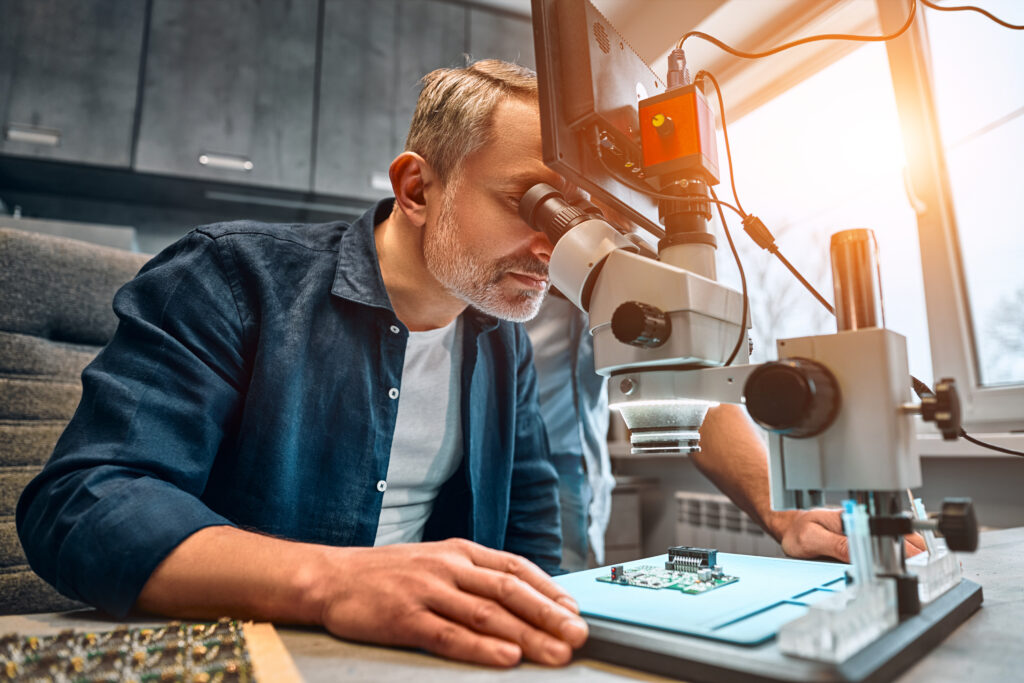Following the launch of their SuperQ™ technology that significantly enhances the performance of silicon-based switching devices, their Chief Technology Officer (CTO), David Jauregui, sits down for an interview. In part one, he focusses on the early days of this innovative methodology.
Question: Why did the industry seem to give up on high voltage (HV) silicon?
DJ: To answer this, we must think back to around 2005 when silicon carbide (SiC) was starting to emerge as a possible HV Schottky solution within certain specific power applications. Around the same time, the growth of gallium nitride (GaN) on silicon wafers moved past the feasibility stage and was considered an attractive solution, with a lower cost than SiC.
It took a decade (~CY2015) for wide-bandgap (WBG) makers to make some progress towards improving their cost and quality related issues. However, manufacturing issues remained and there was no significant impact on the HV silicon power market. In parallel, the popular HV silicon SuperJunction power devices plateaued, delivering only incremental improvements over prior generation designs.
At this time there was no real alternative silicon based HV power device to stretch the performance envelope, so the industry began to move towards WBG devices as the probable next-generation solution for HV power applications. This was despite the higher costs, low(er) quality, and more complex gate drive requirements of WBG technology. The industry had little choice but to accept these shortcomings to allow continued, generational performance improvements of their subsystems.

Reacting to this trend, HV power semiconductor vendors invested heavily in WBG technology / devices, along with the associated elaborate and complex topologies that WBG would require. There was a huge industry motivation to make WBG devices a successful replacement for Silicon. This was, in part, as HV silicon performance was beginning to plateau. Another factor (in my opinion) was that the industry had invested hundreds of millions of Dollars in WBG, based on the belief that WBG would completely replace silicon as the basis of HV power devices within 5 years. Honestly, based upon the status of SuperJunction technology at that time, this assumption seemed eminently reasonable.
Question: What inspired you to develop SuperQ?
DJ: As the industry drove hard in the direction of WBG power devices, no-one seemed to pause, think, and question whether SuperJunction as we knew it then, was truly the only high-performance solution Silicon could ever deliver. Also, at that time, I had personally already twice experienced both the allure and disappointments of an unsuccessful WBG development.
This convinced me that there had to be a more realizable, near-term solution that would deliver generational power improvements. I decided to reach out to my old friend, Mark Granahan, to catch up and discuss industry trends. We agreed the industry was betting too heavily on the near-term success of WBG devices while ignoring possible alternative options that could improve silicon based HV power devices. We then brainstormed a couple of ideas and felt one had the DNA to be a disruptive method to improve both the blocking and conduction performance of any type of power device. This included significantly improving the performance of silicon HV devices while leveraging the well-established silicon-based technologies, quality, cost, and infrastructure.
Question: What were the greatest challenges you faced during the development?
DJ: One of the greatest challenges was knowing what needed to be done to develop HV power hardware, while only having the resources of a startup company. With the iDEAL team background in big companies, we knew how to do it right, but we did not have big company infrastructure. Consequently, it took us time to iterate and converge. Even seemingly simple tasks like shipping wafers from one location to another took time, exacerbated by the pandemic and global shortages. There were tough challenges to solve along the way, but we have a very strong team with many, many decades of power device development expertise. Once we got the data and test results, sound decisions were made quickly, and our problem-solving methods were solid. Our infrastructure is much larger today, which is
exactly what we need as we scale SuperQ and iDEAL.
In part two of this interview, iDEAL Semiconductor CTO, David Jauregui, will look to the future of the SuperQ technology, its adoption and forthcoming challenges.
